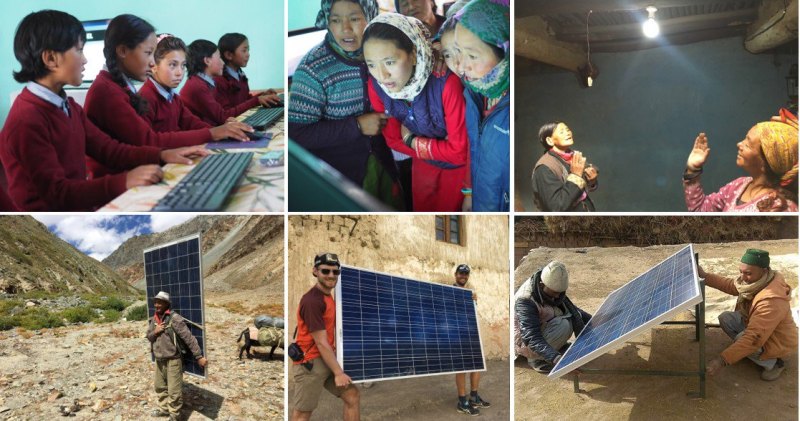A few dozen solar panels have made a significant positive difference in a number of remote villages in the Ladakh and Zanskar regions of India.
Recently reporting on an initiative at the United Nations Global Climate Summit in Katowice, Poland, solar panel manufacture REC states the project was carried out in cooperation with Global Himalayan Expedition (GHE).
Transporting the equipment was no easy task, with many of the communities four to five days trek from the nearest suitable road. Villagers pitched in and carried the solar panels and other equipment, assumed to include small batteries, to the installation sites.
It’s incredible what a difference a little solar power can make. While only 12kW of solar capacity was installed (50 panels) in this particular initiative – around the same capacity as two average-size home solar power systems in Australia these days – REC says the project directly impacted 1,500 people.
“Thanks to the REC solar panels, every household in the villages now has basic access to energy, including LED lights in all rooms, street lights for the common areas and much better lighting in schools,” states the company.
Ditching Kerosene
Up until the installations, the villagers were relying on either very old solar lanterns or kerosene lamps for lighting. Kerosene is not only an expensive purchase for these people, it’s a dangerous and polluting fuel that also produces a low quality light. Through the switch to solar, kerosene consumption is expected to be reduced by 9,000 litres per year and 22.8 tons of CO2 emissions avoided annually.
GHE utilises tourism to set up sustainable energy and education based infrastructure in remote Himalayan regions. Those participating in the expeditions lend a hand with the installations.
“We don’t see ourselves in the field of running expeditions; we see ourselves as facilitators, whose job is to create a fertile environment for future growth and collaborations, for both the participants and the hosts,” says GHE.
Through GHE’s efforts, 55 villages have been electrified since 2014 through the installation of 257 PV systems with a total capacity of 41.8 kW. Dozens of villagers have been trained as entry level solar grid technicians, meaning the systems can be properly maintained. GHE says it also indirectly and directly employs villagers to assist in its expeditions, village surveys and installation of the solar systems.
A Massive Market For Small Off-Grid Solar
According to a report earlier this year from the Global Off-Grid Lighting Association (GOGLA), approximately 120 million people in Africa and Asia had made the switch from kerosene lamps, candles and diesel-fueled generators to off-grid solar energy since 2010.
While solar equipment has rapidly dropped in price over the years, even the cost of a micro-system is still out of reach of many. Rental and pay-as-you-go models have been a key element in accelerating uptake; arrangements often structured in a way so that payments are less than what would be spent on fossil fuels.
While progress is certainly impressive, there’s much more work to be done – GOGLA estimates 1 billion people across the two continents are still without access to mains grid electricity1. The market is huge and the benefits solar can bring these people enormous. Everyone involved can be a winner.
Footnotes
- And many still won’t have access regardless of how many coal-fired power stations are built as they are too far from the mains grid ↩


 RSS - Posts
RSS - Posts



Speak Your Mind